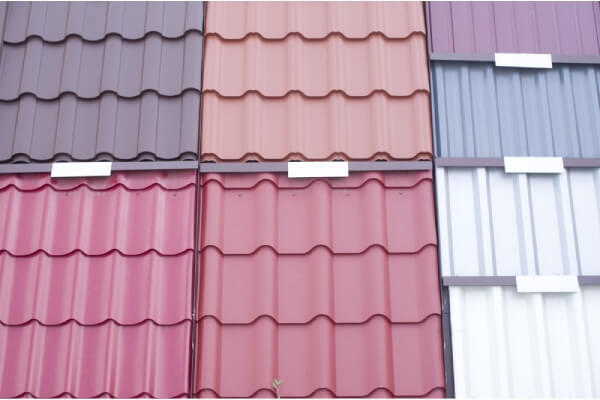Knowing what kind of roofing works best for commercial buildings is key to long-term success. Whether for durability, energy efficiency, or ease of installation, choosing the right types of commercial roofing can make a significant impact on performance and cost-effectiveness. Various roofing materials and methods exist, each offering unique benefits and challenges. Homeowners and building managers alike need to understand these differences before committing to a roofing project.
Built-Up Roofing (BUR)
Built-up roofing, also known as BUR, uses layers of asphalt felt and hot bitumen to create a protective surface. The multiple layers offer strong protection against harsh weather conditions, making it a reliable option for commercial buildings. Its durability also contributes to its cost-effectiveness, ensuring that repair and replacement costs remain minimal over time. However, BUR systems require specialized installation techniques that can complicate the process, especially for larger spaces. Over time, the material may also be susceptible to leaks, which can affect long-term performance. Regular maintenance and timely repairs can help extend its lifespan.
While BUR offers long-lasting protection, the installation process demands professional attention to detail. The complexity of layering hot bitumen and asphalt felt requires experienced contractors to prevent future issues. Its weight also adds stress to the building structure, so proper evaluation of load-bearing capacity is essential before installation. Despite these challenges, BUR remains a popular choice for commercial buildings that prioritize long-term durability. With regular maintenance, BUR systems provide reliable roofing for many years. Understanding its benefits and challenges helps in making an informed decision.
BUR systems are often chosen for their proven track record in protecting buildings from the elements. However, leaks can develop if not installed correctly, so it’s important to use skilled professionals. The layered approach provides extra strength, but this also means higher labor costs upfront. Ensuring that the system is regularly inspected will help catch any issues before they escalate. Choosing BUR involves considering both immediate costs and long-term savings, making it a dependable option for those looking to invest in their building’s future.
Single-Ply Roofing
Single-ply roofing involves applying a single layer of synthetic material, like PVC, TPO, or EPDM, onto the building’s surface. This method is widely regarded for its lightweight nature, reducing stress on the building’s structure. The materials used in single-ply roofing are highly resistant to punctures and tears, which is particularly beneficial in areas with harsh weather. Its energy-efficient properties make it an appealing option for those looking to reduce heating and cooling costs. However, single-ply systems can be more expensive to install than other options, making the initial investment higher.
Single-ply roofing materials provide exceptional flexibility and strength, making them ideal for various commercial applications. The synthetic materials can be installed with fewer seams, reducing the likelihood of leaks compared to other systems. Its lightweight structure offers significant benefits, especially for older buildings that may not support heavier roofing materials. The energy-efficient design also helps regulate indoor temperatures, which can lower utility costs over time. However, the upfront costs may be a concern for some, as single-ply materials typically have a higher price tag than alternatives like BUR or modified bitumen.
While single-ply roofing offers numerous advantages, the cost of installation can be prohibitive for some businesses. It requires professional installation to ensure the material is properly sealed, preventing potential issues later on. Its lightweight construction, however, offers long-term benefits by reducing the strain on the building’s structure. The energy-efficient design adds value by helping to lower ongoing heating and cooling expenses. Choosing single-ply roofing requires balancing the initial investment with the long-term savings in maintenance and energy costs, making it a viable option for those focused on sustainability.
Metal Roofing
Metal roofing consists of metal sheets, commonly aluminum or steel, coated with protective layers to enhance durability. This roofing material is highly durable, offering excellent longevity compared to many other roofing types. Metal roofing can also be aesthetically pleasing, adding a sleek, modern appearance to any commercial building. Its energy efficiency is another key benefit, as metal reflects sunlight, reducing cooling costs during warmer months. The downside is that metal roofing can be noisy, especially during heavy rain or hail, which may be a consideration for certain buildings.
Metal roofing offers strong resistance to weather-related damage, such as wind or heavy snowfall. This durability translates to fewer repairs and lower maintenance costs over the long term. The energy-efficient properties of metal roofing make it an ideal option for buildings looking to reduce their environmental impact. It can also be customized in a variety of colors and finishes, making it an attractive option for architects and designers. However, the initial cost of metal roofing is higher than many other options, and installation requires skilled professionals to ensure proper placement and sealing.
Although metal roofing is more expensive to install, the long-term benefits often outweigh the initial cost. Its energy-saving properties and longevity reduce expenses over time, providing excellent return on investment. Metal roofing’s sleek design enhances the building’s overall aesthetic appeal, making it a popular choice for businesses wanting both function and style. The durability and low maintenance make it a practical solution for areas prone to extreme weather conditions. Choosing metal roofing offers a combination of durability, energy efficiency, and design flexibility that appeals to many commercial property owners.
Modified Bitumen Roofing
Modified bitumen roofing systems offer a more modern alternative to BUR, using pre-fabricated sheets that incorporate bitumen. These sheets are easier to install than BUR layers, making them a practical choice for many commercial buildings. They offer strong durability while being relatively affordable, combining the benefits of traditional and newer roofing materials. The flexibility of modified bitumen also allows for better handling of thermal expansion and contraction, which reduces the risk of cracking. However, frequent maintenance may be necessary to keep the material in top condition, which could increase long-term costs.
This type of roofing excels in durability, particularly in harsh climates. Its ability to handle extreme temperature changes without cracking makes it ideal for areas prone to significant weather fluctuations. The installation process is straightforward compared to BUR, requiring less specialized labor, which lowers initial costs. Despite its ease of installation, modified bitumen may still require more regular maintenance than some other roofing options. This can include patching small leaks or resealing seams, which adds to the overall cost of upkeep. It offers a balance between affordability and long-term reliability.
Modified bitumen roofing provides a cost-effective solution for commercial buildings looking for a durable and adaptable material. The ease of installation helps reduce labor costs while still offering protection similar to more complex systems. While frequent maintenance is a downside, these systems are often easier and quicker to repair. The material’s flexibility means it can handle various weather conditions without the risk of significant damage. This makes it a good option for businesses seeking a middle-ground between budget-friendly and durable roofing solutions.
Asphalt Shingles
Asphalt shingles are one of the most common types of roofing used for both residential and commercial buildings. They consist of individual shingles made from asphalt and fiberglass, making them both affordable and easy to install. Asphalt shingles come in a variety of colors and styles, offering design flexibility to fit different architectural needs. However, their lifespan is shorter than other roofing materials, often requiring replacement within 20-30 years. They are also more susceptible to damage from high winds or severe weather, which can lead to costly repairs.
Despite their shorter lifespan, asphalt shingles remain a popular option due to their affordability and ease of installation. The material is readily available and does not require specialized labor to install, which reduces upfront costs. Additionally, asphalt shingles provide adequate protection against mild to moderate weather conditions. Their lightweight nature also means they do not put excessive strain on the building’s structure. However, regular maintenance is necessary to ensure they remain in good condition, especially in areas prone to high winds or heavy rainfall. Asphalt shingles offer a budget-friendly option for many businesses.
Asphalt shingles can be a cost-effective roofing solution for businesses seeking an affordable yet functional option. Their versatility in terms of design makes them suitable for a wide range of commercial buildings. However, their shorter lifespan and potential for weather-related damage mean that long-term costs may be higher than initially anticipated. Regular inspections and prompt repairs are necessary to prevent small issues from becoming major problems. For those looking for a balance between cost and performance, asphalt shingles provide a practical solution that remains popular across various industries.
Green Roofing
Green roofing is an innovative system combining vegetation, a growing medium, and a waterproof membrane to form a living roof. This design enhances energy efficiency by insulating buildings naturally, helping to lower heating and cooling costs. Green roofs also help to reduce stormwater runoff, absorbing rainwater and filtering pollutants before releasing it back into the environment. As an added bonus, green roofs contribute to improved air quality in urban settings, providing a sustainable solution for commercial buildings. However, specialized maintenance is required to keep the plants healthy, and green roofs may not be suitable for all climates, particularly those with extreme weather conditions.
While green roofing offers numerous environmental benefits, the complexity of maintaining such a system can be challenging. Specialized irrigation systems, regular inspections, and proper plant care are necessary to ensure the roof performs well over time. It’s also important to consider whether your building can support the weight of a green roof, as these systems can be significantly heavier than traditional roofing options. Businesses interested in sustainability often find green roofing appealing, but careful planning is essential to avoid potential long-term issues. The up-front costs may be higher, but the ecological and energy-saving benefits are considerable.
Green roofing adds a unique aesthetic appeal to commercial buildings while actively benefiting the environment. The vegetation helps reduce heat islands in urban areas, making it an eco-friendly choice for businesses looking to reduce their carbon footprint. Green roofs can also be used creatively, offering space for gardens or recreational areas. Despite the many advantages, they require ongoing care and may not be feasible in all regions due to weather or structural limitations. Considering the environmental impact and long-term energy savings is crucial when weighing the benefits of green roofing.
Spray-Applied Roofing
Spray-applied roofing is a liquid coating that can be sprayed directly onto roof surfaces, forming a seamless, waterproof barrier. This method is ideal for both new and existing roofs, offering a quick and efficient installation process. The flexibility of spray-applied roofing makes it suitable for roofs with irregular surfaces or shapes, providing comprehensive coverage where traditional materials may struggle. While the ease of application is a major advantage, this type of roofing may require more frequent maintenance compared to other, more durable systems. Spray-applied roofs can wear down over time, particularly in areas exposed to harsh weather conditions.
The primary appeal of spray-applied roofing lies in its speed of installation and ability to cover hard-to-reach areas. This roofing system is often used as a protective coating on existing roofs, extending their life without the need for a complete overhaul. However, it’s essential to monitor the roof regularly, as the coating may degrade more quickly than traditional materials. Regular maintenance and reapplication can help extend the lifespan of spray-applied roofs, making them a viable option for businesses seeking a quick, cost-effective solution. Despite these drawbacks, the flexibility and ease of use make spray-applied roofing a popular choice for certain projects.
Spray-applied roofing is often chosen for its versatility, particularly in complex or irregular roof designs. This roofing system creates a seamless barrier that protects against leaks and water damage, making it a practical solution for businesses in wetter climates. The material is easy to repair, as additional coats can be sprayed on as needed. However, this also means more frequent maintenance, as the coating may wear down faster than other roofing materials. Businesses should weigh the benefits of quick installation and coverage against the potential for higher maintenance costs over time.
Tiled Roofing
Tiled roofing uses individual tiles made from materials such as clay, concrete, or slate, creating a durable and aesthetically pleasing roof surface. These materials are known for their longevity, often lasting several decades with proper care. Tiled roofing is a common choice for buildings looking to maintain a classic or upscale appearance. However, the installation process can be expensive, as it requires specialized skills and materials. Additionally, tiled roofs are heavier than other roofing systems, so the building’s structure must be evaluated to ensure it can support the weight.
Tiled roofs offer exceptional durability, making them a cost-effective option for businesses seeking long-term protection. The materials used in tiled roofing are resistant to weather-related damage, such as high winds or heavy rain. This durability, combined with the aesthetic appeal of natural tiles, makes it a popular choice for commercial buildings looking to enhance their appearance. However, the weight of tiled roofs requires careful structural evaluation before installation. Despite the higher initial cost, the long-term savings from reduced maintenance and repairs can make tiled roofing a valuable investment.
The aesthetic appeal of tiled roofing is one of its most significant advantages, offering a timeless look that complements a wide range of architectural styles. However, tiled roofs require specialized installation, which can increase labor costs. The tiles themselves are also prone to cracking or breaking, particularly in areas with frequent freeze-thaw cycles. Regular maintenance is necessary to replace damaged tiles and ensure the roof continues to provide adequate protection. Despite these challenges, the longevity and classic appearance of tiled roofing make it a favored option for businesses seeking both function and style.
Get the Best Commercial Roof from Harveys Five Star Roofing
Harveys Five Star Roofing strives to deliver premium commercial roof solutions to ensure your business property remains protected for years to come. With our expert team, we offer quality services using the best materials to build long-lasting roofs. Homeowners looking for durable, well-built roofs can also rely on us for top-tier results. As a trusted roofing company in Sioux Falls, we are committed to providing exceptional workmanship. Our solutions help protect your investment while enhancing the look and value of your property.









